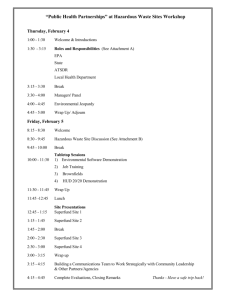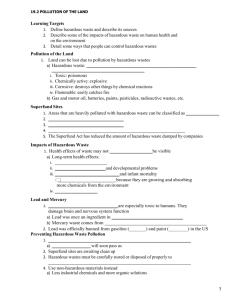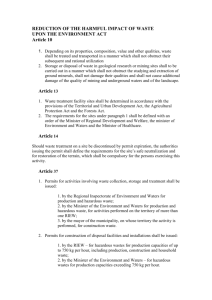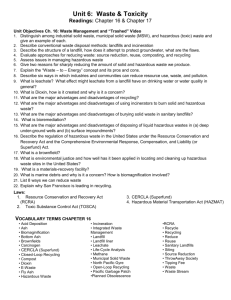Clean Air act 1970 The Clean Air Act (CAA) is the comprehensive
advertisement
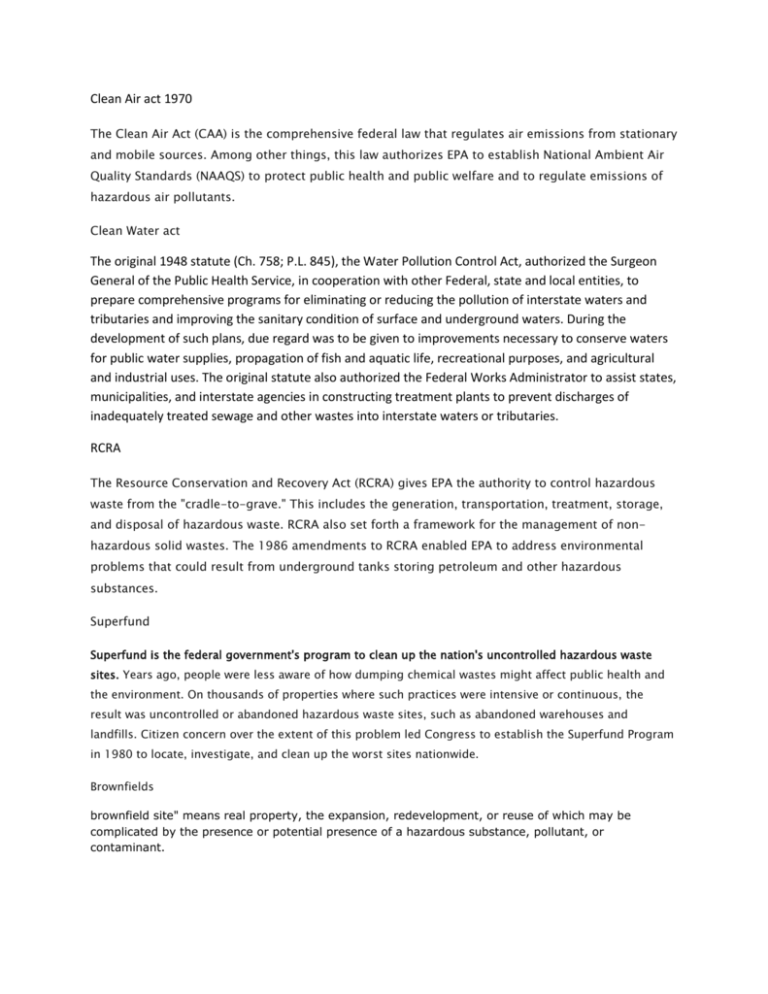
Clean Air act 1970 The Clean Air Act (CAA) is the comprehensive federal law that regulates air emissions from stationary and mobile sources. Among other things, this law authorizes EPA to establish National Ambient Air Quality Standards (NAAQS) to protect public health and public welfare and to regulate emissions of hazardous air pollutants. Clean Water act The original 1948 statute (Ch. 758; P.L. 845), the Water Pollution Control Act, authorized the Surgeon General of the Public Health Service, in cooperation with other Federal, state and local entities, to prepare comprehensive programs for eliminating or reducing the pollution of interstate waters and tributaries and improving the sanitary condition of surface and underground waters. During the development of such plans, due regard was to be given to improvements necessary to conserve waters for public water supplies, propagation of fish and aquatic life, recreational purposes, and agricultural and industrial uses. The original statute also authorized the Federal Works Administrator to assist states, municipalities, and interstate agencies in constructing treatment plants to prevent discharges of inadequately treated sewage and other wastes into interstate waters or tributaries. RCRA The Resource Conservation and Recovery Act (RCRA) gives EPA the authority to control hazardous waste from the "cradle-to-grave." This includes the generation, transportation, treatment, storage, and disposal of hazardous waste. RCRA also set forth a framework for the management of nonhazardous solid wastes. The 1986 amendments to RCRA enabled EPA to address environmental problems that could result from underground tanks storing petroleum and other hazardous substances. Superfund Superfund is the federal government's program to clean up the nation's uncontrolled hazardous waste sites. Years ago, people were less aware of how dumping chemical wastes might affect public health and the environment. On thousands of properties where such practices were intensive or continuous, the result was uncontrolled or abandoned hazardous waste sites, such as abandoned warehouses and landfills. Citizen concern over the extent of this problem led Congress to establish the Superfund Program in 1980 to locate, investigate, and clean up the worst sites nationwide. Brownfields brownfield site" means real property, the expansion, redevelopment, or reuse of which may be complicated by the presence or potential presence of a hazardous substance, pollutant, or contaminant.
